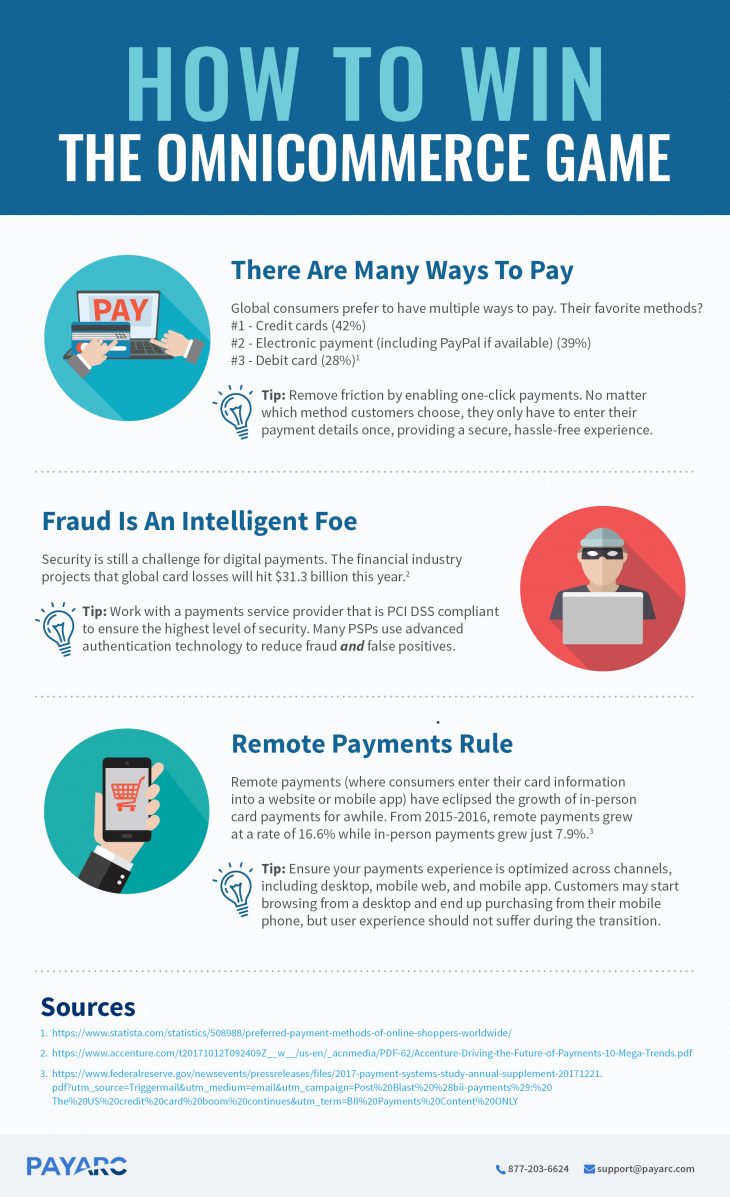E-commerce has leveled the playing field in a lot of ways. Smaller online businesses now have access to the same sprawling, international customer base that established retailers enjoy. Small and large retailers alike are cashing in on the e-commerce opportunity: In 2017 alone, online-based businesses made sales amounting to $2.3 trillion, up from $1.8 trillion in 2016.
Growth in the next 3 years is predicted to push sales to $4.8 trillion. It’s a compelling opportunity for merchants of all shapes and sizes.
While established retailers may already have a strong foothold in the e-commerce space, smaller merchants often go through some trial and error in perfecting the online shopping experience. E-commerce optimization is fluid, evolving, and complex. The ability to perfect every area of an online shop can be both daunting and expensive for smaller online businesses.
Despite this, there are certain areas on which merchants need to focus if they expect to be profitable at all online. The payments experience is at the top of this list. Poor payment experience contributes to almost one-third of cart abandonment in the U.S.
That doesn’t have to be the reality for online merchants. There are three big ways to improve the e-commerce experience today.
Enable Frictionless Payments
Consumers want to get from point A to point B in as few clicks as possible. Your payments process should enable them to do this. Avoid redirecting customers away from your branded site to an external payment gateway, as this disrupts the flow. Instead, choose a gateway provider that integrates seamlessly with your e-commerce site or mobile app.
Include a progress bar at the top of checkout screens so users can see how far along they are in the checkout process. This can help move customers along in the process while reassuring them that there’s not much further to go.
Avoid requiring users to register before completing a purchase. It’s a major point of friction in the checkout process and can increase cart abandonment rates quite a bit. Instead, allow customers to proceed to checkout as a guest and give them the option to register later after they have completed their purchase.
Boost Security and Fraud prevention
The rising amount of online fraud and data breaches has made shoppers wary of entering personal details online. It’s estimated that roughly one-fifth of cart abandonments occur when customers cannot trust you with their credit card details.
In addition to providing adequate security assurance, you should boost customer confidence by safeguarding the entire checkout process. Many merchants use Address Verification Service (AVS) to verify the address of a person claiming to own a credit card. Card Verification Value (CVV) is another security protocol, which asks the cardholder for the 3 digit security number on the back of a Visa or MasterCard card. While these tools increase security, they also boost customer confidence that your brand takes security seriously.
Working with a reputable payment processor that is PCI DSS complaint can also aid with site security. This level of baked-in security has become table stakes at this point, so merchants should also seek out solution providers that can help reduce fraud. A tailored suite of fraud tools not only protects your bottom line but keeps your customers’ sensitive data safe.
Cater to Consumers’ Omnichannel Preferences
Omnichannel optimization is more important than ever. Increasingly, merchants are seeing customers begin shopping on a desktop, visiting the store to see and touch items, and then complete the purchase on a mobile device. The cross-channel combinations are endless, but the bottom line remains the same: consumers want a consistent experience across devices and channels.
Again, working with a reputable payment services provider can streamline omnichannel success. A great provider will be able to facilitate omnichannel payments across the board, including broad payment types, high-level security, and fraud prevention tools.
Conclusion
While e-commerce and online shopping has opened up a world of opportunity for merchants to sell to new audiences, taking advantage of that opportunity requires best practice implementation and the ability to pivot with evolving consumer preferences.
Successful online merchants will prioritize customer experience, security, and the omnichannel experience. As the framework upon which great e-commerce experiences are built, merchants that optimize these areas will be best positioned for growth.













